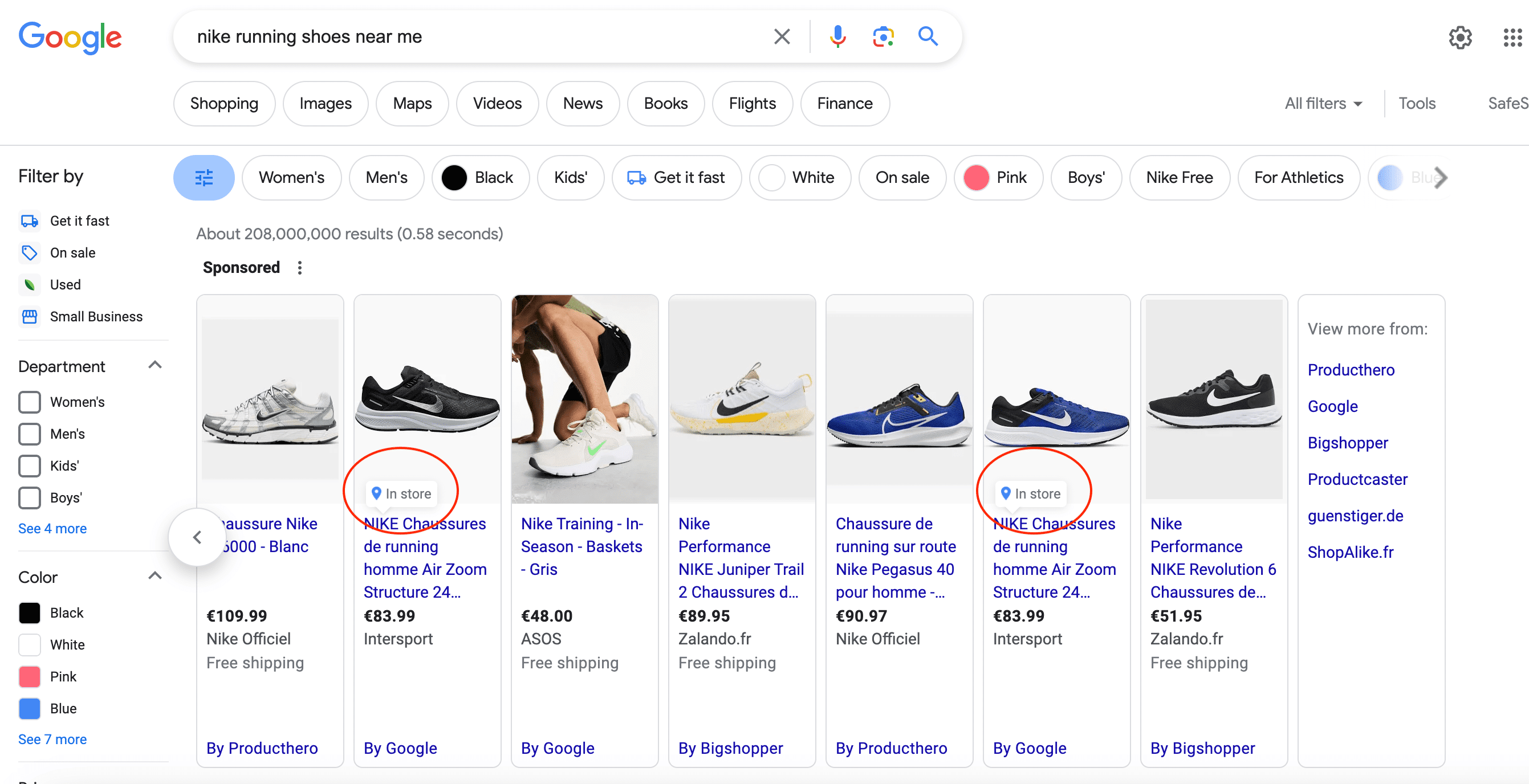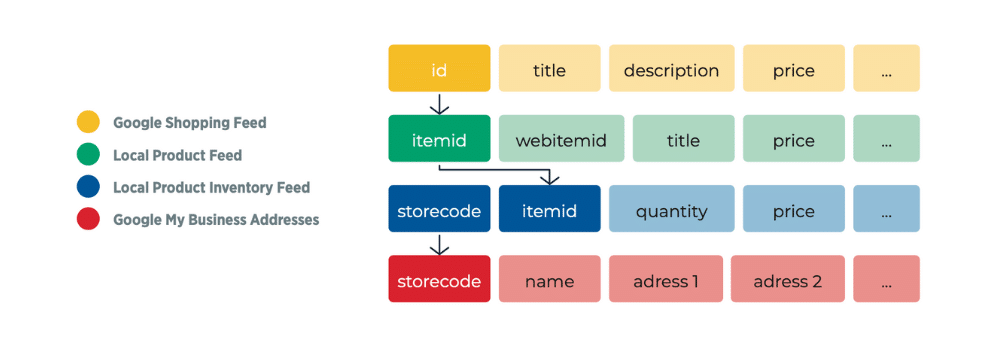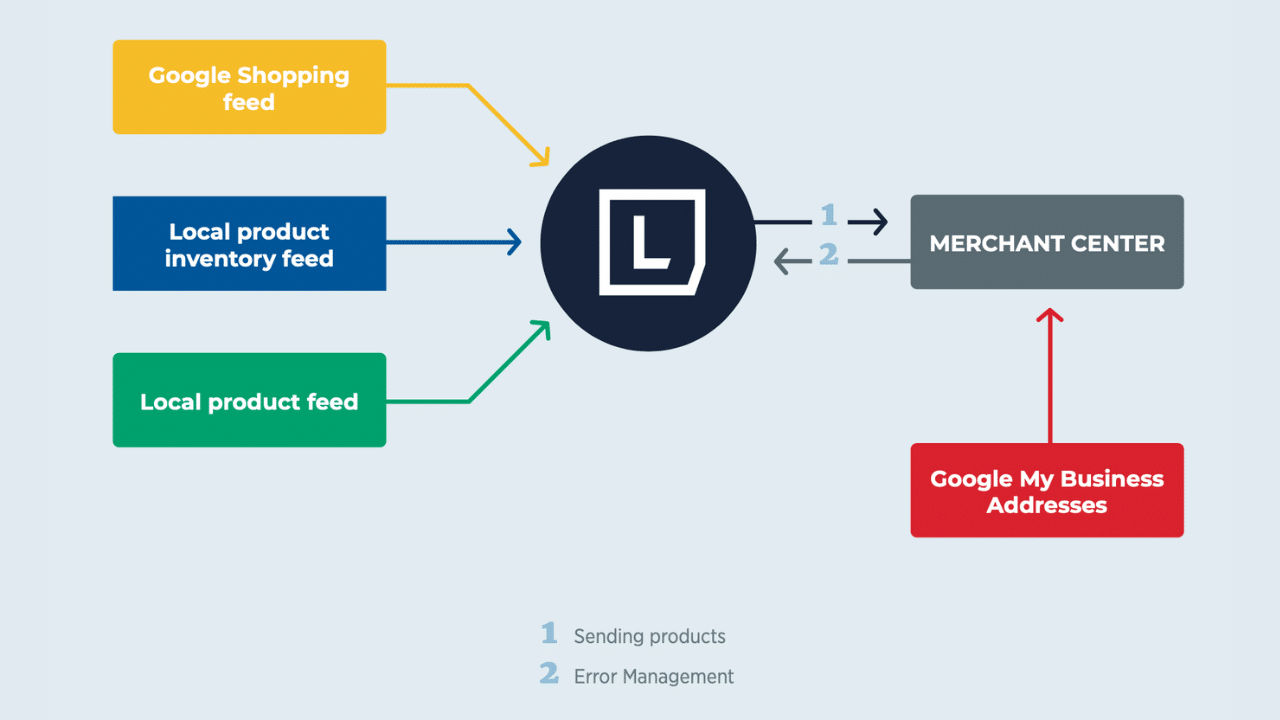Google LIA: A Step-by-Step Guide
06/11/23
7'
Google Local Inventory Ads (LIA) serve as a bridge between the 80% of global sales that happen offline and the digital realm where consumers begin their shopping journey. This guide will outline how to leverage Google LIA to present your in-store inventory on the world’s most popular search engine, tapping into the vast potential customer base. By following the steps and tips detailed here, you can ensure that your products are visible to the considerable number of shoppers—over half during the holiday season—who confirm product availability online before visiting a store.
Join us as we delve into optimizing Google LIA for your business, helping you to capture the attention of local shoppers and drive increased foot traffic to your stores. An interesting case study awaits you at the end.
What are Google LIA?
Google Local Inventory Ads (LIA) are a digital marketing solution that allows retailers with physical stores to showcase their products to local customers searching on Google. This advertising feature connects the online interest of consumers with the availability of items in a nearby store, providing a clear and immediate link between online searches and in-store inventory. LIA is designed to support retailers in leveraging the prevalence of in-store shopping by making their local inventory visible and accessible to a digital audience.

How Does it Work?
To take advantage of Google LIA, a retailer needs both a physical storefront and a digital system to manage their inventory online, linked with the Google Merchant Center.
This integration enables retailers to display their full array of products on Google, covering even those items exclusively sold in-store. Structurally akin to Google Shopping ads, they are accessible via desktop and mobile, operating on a cost-per-click (CPC) basis. These ads offer the distinctive benefit of alerting nearby online searchers to the in-store availability of your merchandise. Clicking an ad redirects shoppers to a Google-managed page for your store, called the local storefront, detailing product availability, operating hours, and navigation instructions.
Nota bene: You have the option to choose between a Google-hosted local storefront and a merchant-hosted local storefront (MHLS), which can be either full or basic. The MHLS is entirely hosted and managed by the retailer on their own website, as opposed to being on Google’s platform. Be aware that there could be particular feed requirements for both the basic and full versions of MHLS.
The essential prerequisites:
- You need to have physical shops located in Australia, Austria, Brazil, Canada, Denmark, France, Germany, India, Ireland, Italy, Japan, Netherlands, New Zealand, Norway, Poland, Spain, Sweden, Switzerland, the UK or the US (as of 2023).
- You need a Google Merchant Center account
- Google needs to approve your LIA eligibility
The Benefits of Using Google LIA
The benefits of using Google local inventory ads are multiple. Here are five main reasons why to start or improve your LIA strategy:
- Continuity & Complementarity: With LIA you make sure that your brand is present both offline and online, and develops a complementary relationship between your e-commerce site and physical stores. Remember: 45% of global buyers use the “buy online, pick up in store” option.
- Availability: You will be able to offer customers a greater availability of your products. According to Google, 83% of online shoppers would be prepared to go to a shop if they could check the product’s availability online beforehand.
- Visibility: With LIA you benefit from greater visibility in Google’s results pages, particularly on mobile devices.
- Customer Experience: Improve customer experience by adapting your customers’ purchasing process.
- Performance: You can easily evaluate the impact of your online ads on store traffic and sales.
Tips & Best Practices for Google LIA
Product Listings
Enhance your product listings by using straightforward titles, high-quality images, and precise pricing. It’s important to maintain accurate inventory levels since many consumers, especially during the holiday season, will check the availability of products online through services like Google LIA before deciding to buy in-store.
Manage Your Feeds
Some tips to manage best your feeds needed for Google LIA:
- Use a Google My Business address feed to send your physical stores’ addresses.
- Check your product feed which deals with your online product stock. Remember: This is the feed that you have already used for Google Shopping
- Send your local product feed which gathers together all data related to products sold in store.
- Indicate the levels of stock and the sales price available in each store via a local product inventory feed.
Product Information Mapping
Thanks to a common ID, product matching between different data sources will be done in your Google Merchant Center.

Update Your Feed to Update Your Data
Always make sure to have relevant and updated data in your feeds and ads. Here are our update recommendations:
- Local Products Feed: At least once a week
- Local Product Inventory Feed: At least once a day, but can be submitted multiple times per day to update segments of your inventory
- Products Feed: At least once every 30 days
Google LIA Use Cases
To easily handle your Google LIA strategy it is best to work with a strong feed management platform. It can make a real difference. Managing all the feeds in one platform is a good way to optimize, update, and correct them. It will enhance the performance of your local inventory ads. Here is how it works with Lengow, a leading feed management platform:

How Decathlon Italy boosted its Google LIA campaigns
With the start of using Google LIA in May 2022, Decathlon Italy utilized Lengow’s services to distribute 200,000 products across 16 channels, aiming to enhance web-to-store sales for their 140 physical stores. Lengow’s platform enabled Decathlon to optimize a massive catalogue of 3 million products within just four months. The use of tools like Google Analytics App and Segments through Lengow helped Decathlon track revenue, manage acquisition costs effectively, and focus on showcasing their best products. They also benefited from features such as Automatic Rules and Filters for quick optimization and MyCustomChannel for data analysis and internal sharing.
The implementation of Google LIA with Lengow yielded notable benefits for Decathlon Italy. They experienced a 49% reduction in Cost Per Click (CPC), a 54% decrease in Cost Per Store Visit, and a 16% rise in Click Through Rate (CTR). These improvements were critical in revitalizing their physical stores post-Covid and confirming the efficacy of the LIA strategy through A/B testing. Encouraged by these positive outcomes, Decathlon Italy plans to expand its use of Lengow’s services, including exploring Price Intelligence and potential launches on Facebook LIA and Criteo LIA.
Decathlon Italy Success Story
Implementation of an effective web-to-store strategy leading to a sign…
Learn moreYour e-commerce library
Sign up for our newsletter
By submitting this form you authorize Lengow to process your data for the purpose of sending you Lengow newsletters . You have the right to access, rectify and delete this data, to oppose its processing, to limit its use, to render it portable and to define the guidelines relating to its fate in the event of death. You can exercise these rights at any time by writing to dpo@lengow.com

Trending Posts
Marketing channels
ChatGPT Ads and advertising on GenAI Search Engines: what you need to know
Advertising on generative AI-based search engines (GenAI) marks a new era in digital marketing. After two decades dominated by traditional…
22/05/25
6'
Marketing channels
Reddit and Social Commerce: When Users Take Back Control
Before buying anything, we compare. We hesitate. And more and more often, we end up typing the product name followed…
30/06/25
8'
Marketing channels
How to Sell on TikTok in 2025: The Ultimate Guide to Success
To sell or not to sell on TikTok? That remains a question many brands ask themselves. But here’s what you…
03/02/25
7'
E-commerce Trends
E-Commerce 2025: The New Rules of Digital Retail
What’s going on in e-commerce? A lot. If 2024 was the year brands got comfortable with marketplaces, AI tools, and…
11/07/25
8'
Marketing channels
Omnichannel Strategy: The Best Examples of Successful Brands
Consumers interact with brands through multiple channels, including online, in-store, and mobile apps. More than 90% of consumers expect a…
04/04/25
5'




